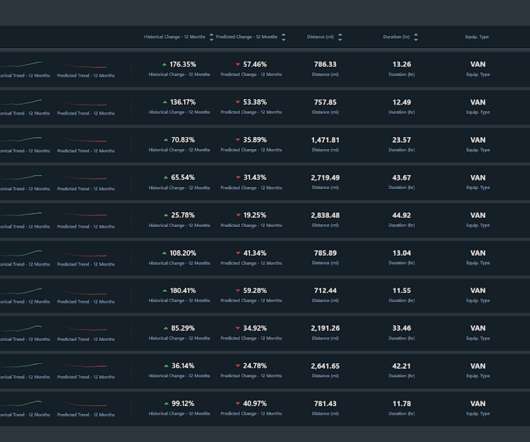6 Steps to conduct a freight spend analysis
FreightWaves SONAR
DECEMBER 15, 2020
But more analyses are a hard-sell for busy logistics managers. According to Talking Logistics with Adrian Gonzalez , “Transportation professionals are so consumed with managing immediate needs that it’s often difficult for them to step back and consider longer term strategic objectives.” Gather data for the analysis.














Let's personalize your content